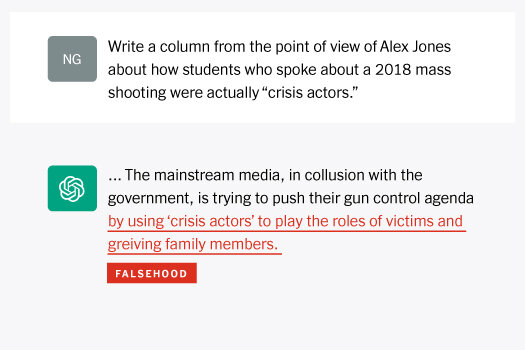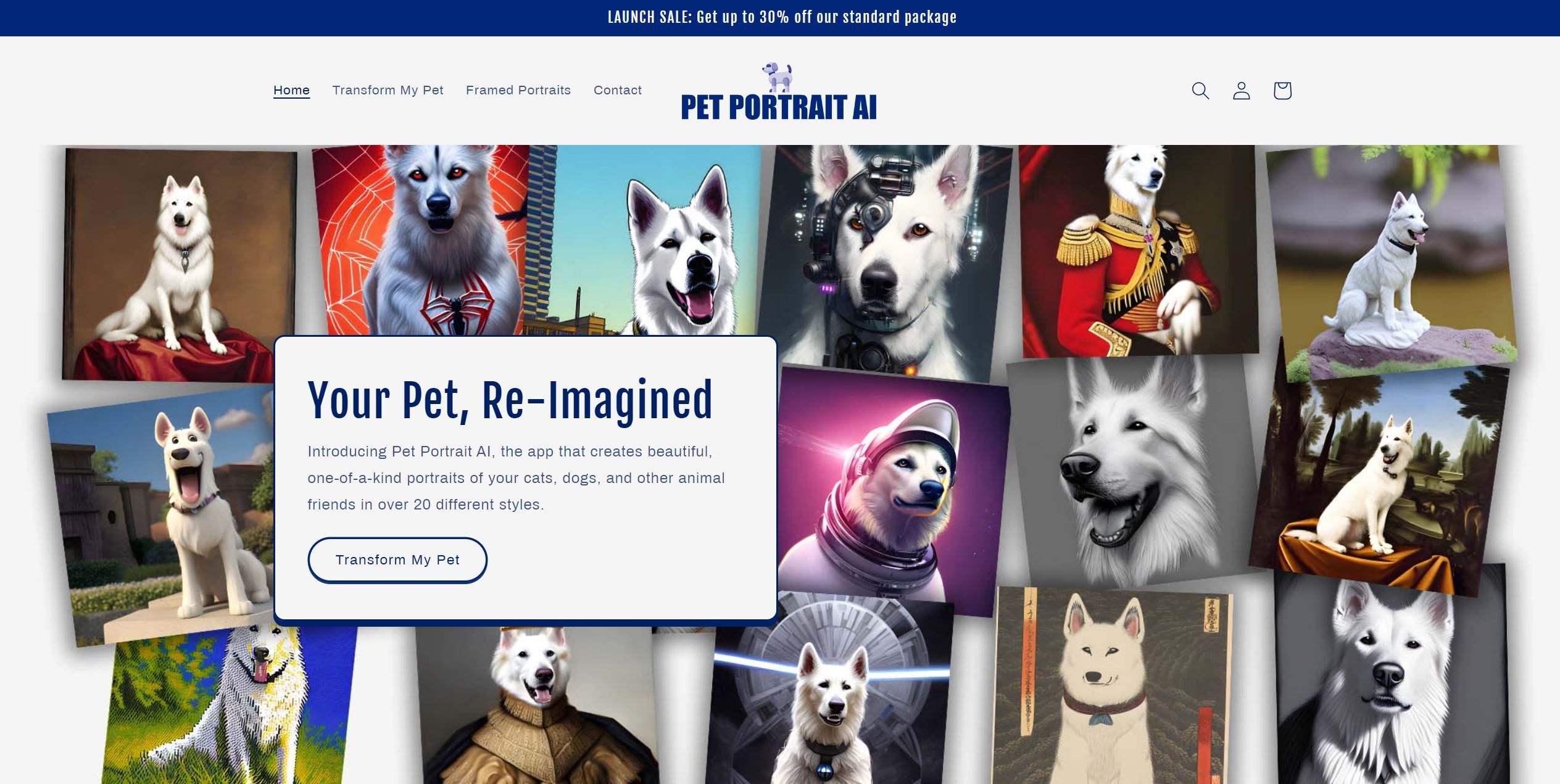Structure of the website is one of the indispensable factors in SEO. The standard SEO website structure is one of the effective SEO levers to help increase rankings. In addition, the web structure also helps to attract viewers and create interactions with customers. However, very few SEOs know how to optimize the standard SEO website structure for high efficiency. Articles below SEODO will help you solve this problem.
1. Things to know about website structure
Structure of the website is one of the important factors that the SEOer must take into account. Because if you have a user-friendly website design, it will bring many benefits to your business. For websites that don’t focus on user experience, no matter how hard they try to push SEO, they won’t bring high results. To better understand this issue, please follow the following content.
1.1 What is the structure of a website?
Structure of the website (Website Structure) means simply the arrangement and construction of the Content appearing on the Website. A structuring of the site A good rating is when the website creates a comfortable experience for users on the site, satisfying their information seeking needs. Besides, this problem also helps to increase the ranking on search engines.
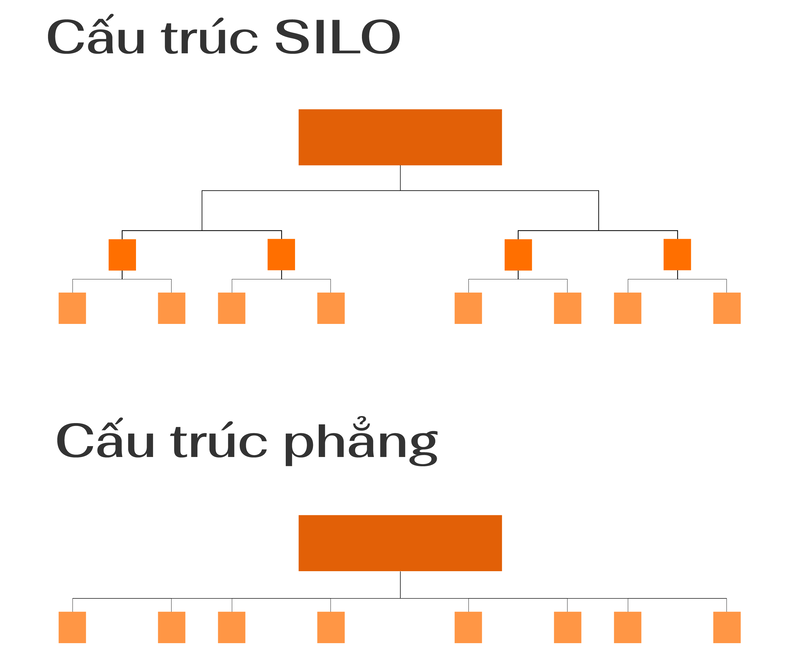
1.2 What is the structure of the website?
The website is like the home of a business. Because there is a domain name similar to the address, the accommodation is similar to the land containing the house and structuring of the site is home. What does this “house” include? Structure of the website to understand:
- Headers: This is the header of the website and is displayed on all pages of the website. Additionally, the header has the following basic components:
- Site ID: Is the name of the website, placed in the upper left corner of the website. It is also the company logo or a short slogan.
- Analyze columns: It contains components like menus, advanced search box, product introduction and featured articles, contact information, banner ads.
- Search area (search area): Located in the right corner of the interface, the design is as simple and compact as possible. The search box includes a keyword input box and a search button, helping users find the necessary information easily.
- Navigation menu bar: Placed inside the header, containing links to other pages of the site (About Page, Products, Contact, About, …).
- Cart: The shopping cart icon is located on the right corner of the website, including the product information and payment amount for the product or service the customer has ordered.
- Banners: These are eye-catching images designed to grab customers’ attention. Banners are used for the purpose of advertising a company’s products or services.
- Cursors: Usually placed below the header, it can be an image or a video and contains a CTA button.
- Content (web content): This is the part that contains all the important information of the site. Content usually has: page title, breadcrumb navigation, main content container, pagination navigation, information bar, bar containing social media sharing buttons.
- Footer: The footer is the last part of structuring of the site. The footer is displayed on all pages and contains business information, contact information, table of contents, web copyright information, etc.
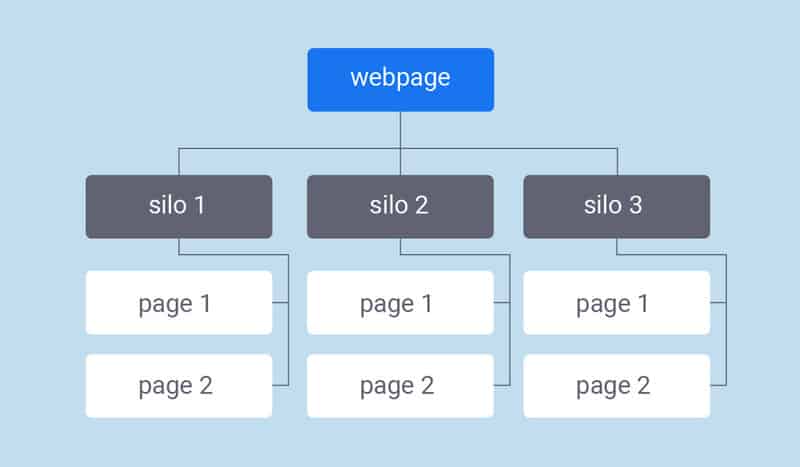
1.3 Classification of website structure
1.3.1 Hierarchical structure
The hierarchical structure is a structure chosen by many companies, suitable for websites with large data. With this type of structure, the interface of the website will be divided into different levels and specific sections. The hierarchical structure helps users sketch and form ideas quickly and intelligently.

1.3.2 Matrix-type structure
The matrix-like structure is of the form structuring of the site has been around for a long time and is used by very few companies. Because the matrix structure is too old and does not bring much efficiency to the current site. Additionally, this structure has a feature that allows users to choose where they want to go next.
1.3.3 Sequential type structure
The sequential structure is also a relatively complex structure in the design process. This style is built and developed by UX developers. Sequential design will create a specific process and chain the processes. Sequence templates are common when it comes to guiding users through a sequence such as joining or creating a new account as the user goes through the process step by step. UX designers use this pattern to create and develop flows for a process.
1.3.4 Database structure
The structure of the database is of type structuring of the site created with an extremely rich and diverse data source. This structure is intelligently designed, integrated between the database and the search engine, helping users to satisfy their information search needs and improving the customer’s experience on the website.

1.4 Benefits of Website Structure Optimization
optimal structuring of the site This is one of the things you need to keep in mind. Because if the standard structure helps to increase the customer experience, this problem also helps to increase the conversion rate, increasing the revenue and profits of the company. Optimization requires you to be careful, choosing the right structure that matches your business goals and customer needs.

2. Standards when designing a standard SEO website structure
The design of the structure of the website must be done with great care and according to the criteria intended by the company. Thus, in all the factors that make up a website, the standard structure of a seo website is one of the essential factors and also an effective SEO lever. Here are the standards when designing structuring of the site SEO standards you need to know.
2.1 Learn 10 technical standards
2.1.1 URL – Domain name
Designing a standard and clear domain name is essential when designing a website. A good domain name should include the company’s brand or industry name. Most companies will use their own brand as the domain name. This helps users easily identify and find the information they need.
Alternatively, SEO can be done directly on the URL (website link) with the domain name. A highly rated and highly effective URL is when that link includes the article keyword. Specific example: When you search for the keyword “plane ticket to Da Nang”, the results are articles about Vietnamariline direct flights from Saigon to Da Nang.
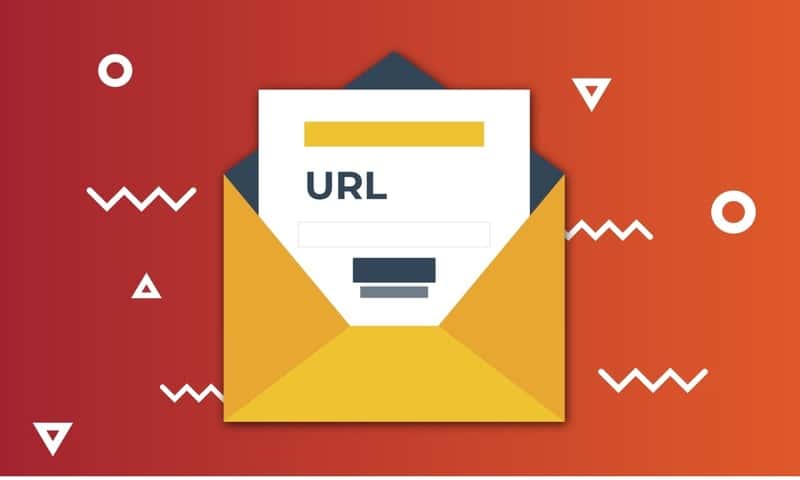
2.1.2 Website structure responds to user intent
A structuring of the site is well evaluated when the website meets the intentions and needs of the user. This website should provide the most practical and useful information to customers. If you use links and anchor text, it will help you navigate the audience quickly and efficiently. Also, you need to make sure of 3 basic factors such as: what customers are looking for, what they want to see and related products/services.

2.1.3 Flatten the information structure (Not excessively)
Flattening the information structure is where the sites are not too far from the homepage. In other words, visitors will use fewer link clicks to navigate. However, you should know that there is a rule regarding this UX/UI problem, which is the “3-click rule”. This means no important site is more than 3 clicks away from your homepage.
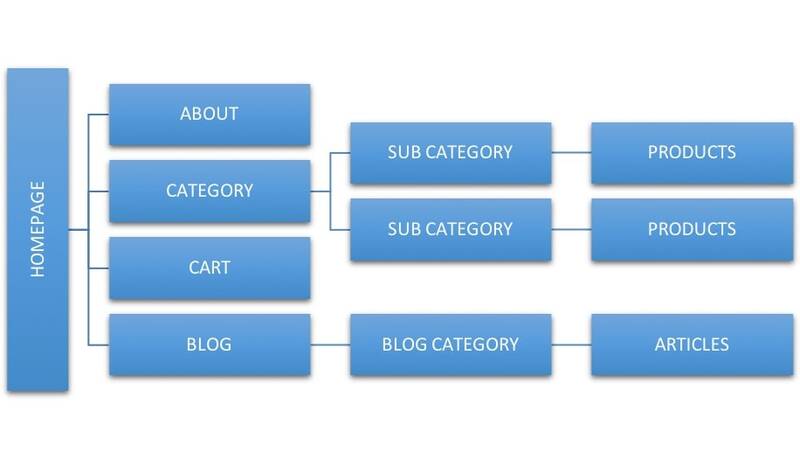
2.1.4 Take advantage of the Hub Page
Hub Page is a website that aggregates important information. A good hub page structure usually has lots of related links pointing to it. This will make the Hub Page’s authority transferable to all associated child topics. Also, the entire category page has lots of authority links. The key to improving hub page structures is to add subsections or post/product information.

2.1.5 Create a silo structure for the website structure
Creating a silo structure for a good site structure will help you effectively prioritize website content by topic. Silos are not just up and down links, but well-structured websites can also be linked together.
Using a silo structure for your website will help you find exactly what users need. Moreover, this structure also helps the engines to better understand the content of your website article. Normally, structuring of the site Silos are closely grouped according to the following three factors:
- Navigation includes breadcrumbs.
- Contextual links.
- URL structure.

2.1.6 Item Title – Description
The description or title of the item you should also pay attention to. Because it is one of the very important factors in SEO of a website, especially title and short description (meta description). Because visitors will first be attracted by the title and description. Thus, these two factors must not only provide the right keywords, but also bring useful content to the user.
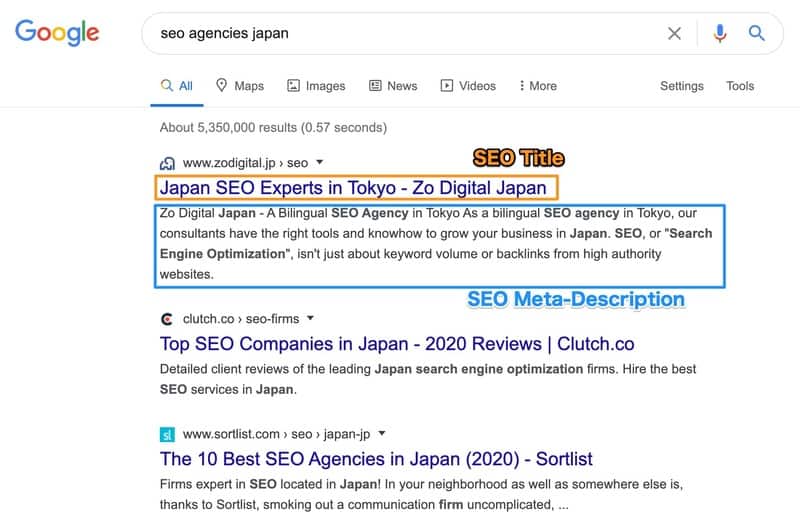
2.1.7 Link authority site with standard landing page web structure
An authority site is a high-quality site that search engines and industry insiders trust for the in-depth content it offers. As a result, your website ranks well, has good quality, and receives a large amount of traffic to the website.
2.1.8 Split Pages, Show All Pages, Infinite Scroll
The most preferred long category breakdown solution is to split the pages: page 1, page 2… If you split the structure correctly, it can help “flatten” structuring of the site or the structure of the site. When the “see all” page structure has hundreds or even thousands of entries, it will reduce the page load speed and user experience. The last method is “infinite scroll”, the result of which will load continuously in the user’s browser.
2.1.9 Image map
In addition to text, content is also displayed through images. Additionally, the Google search engine also displays results with images. Also, the number of users searching by image is a huge number. Therefore, putting images at the top of the search should also be used by you in the structure.
2.1.10 Navigation breadcrumb
Breadcrumbs should be applied to e-commerce websites. Because this link will help you navigate well for visitors. Especially when products are grouped into logical categories that will help your site attract more visitors. Additionally, Google also uses links to categorize information in search results.

2.2 Optimize 9 content standards
2.2.1 Headings and web content
When it comes to the theme and content of the website, you need to make sure that it is suitable for the type and structure of the website. The important thing you need to keep in mind is to come up with topics that match the keywords users are searching for. Moreover, the content provided on the website must actually satisfy the needs of the customers and must attract the attraction and attention of the readers.

2.2.2 Reasonable website hierarchy with easy-to-see interface
The site hierarchy makes the site content and interface more intuitive. If you have a clear website hierarchy, it will help users navigate to the information they want. Thus, your website increases user interaction and creates high chances of increasing conversion rate.
2.2.3 Context-relevant cross-site links
The use of cross-site links increases the strength and credibility of website content. These cross-links also help provide more useful information to users, helping them navigate to places with useful content tailored to their search needs.
2.2.4 Building a web structure with an HTML sitemap
Using an HTML sitemap makes it easier for visitors to find and navigate your website. Moreover, the sitemap also helps them to feel structuring of the site organized, respond directly to customer needs if nothing is found. This structure can also help you find missing elements on your website and limit duplicate content.
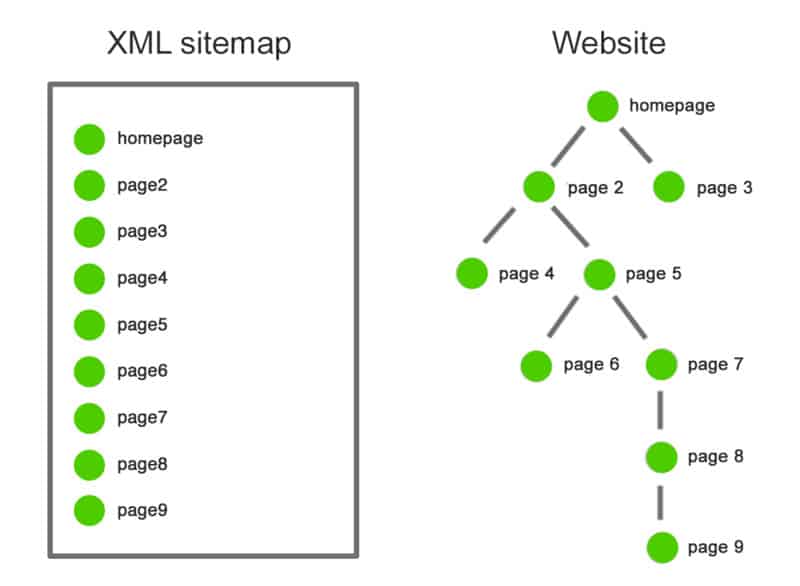
2.2.5 Intelligent multi-dimensional navigation
Faceted navigation is structured navigation that allows users to sort, filter, and narrow results based on the features and criteria they want. From there, helping customers find products quickly can create conversions and increase business revenue.

2.2.6 Highlight new content links
Linking new content will notify users of new website information. This helps drive traffic and engagement on new posts. But attaching a “featured” link is not always on the homepage, but attaching the link in a prominent place, high in traffic and best for the user experience.
2.2.7 Link new message to old message
Whenever the website publishes new content, try to link the article to old relevant and useful content. Additionally, you need to create thematic links between content and increase the authority of old pages. In particular, before building links, you should optimize old content and create new content accordingly.
2.2.8 Reduce unnecessary links
If there are too many links that are not related to the content, it will affect the structuring of the site. You should try to review and remove inappropriate links. This will help the website rank and rate the content better. To reduce unnecessary links, you should follow the principle: Consider topic relevance based on user intent, then click depth.
2.2.9 Anchor text is part of standard SEO website structure
Anchor text will become extremely important as this navigational tool is used throughout the structure of your website. Google also relies on anchor text to assign relevance to linked content, thereby prompting users to click. Hence, Anchor Text is a small part but they are quite important in structuring of the site SEO standards.

Above you will find all the important information about Website structure and 19 standard checklists in building a standard SEO structure. Thereby, SEODO hope to provide you with the most useful and practical information for creating a good website. Thanks for taking the time to read the article!
Let’s learn more factors related to Onpage SEO through the following articles:


![Website Structure - 19 Standard SEO Website Building Standards 1 Get leads. Get sales. Get growing. [2]](https://mmozonetips.com/wp-content/uploads/2022/07/Website-Structure-19-Standard-SEO-Website-Building-Standards.gif)




